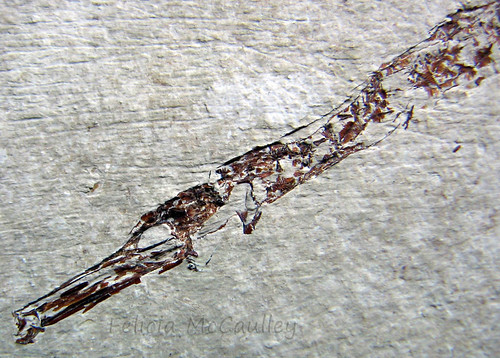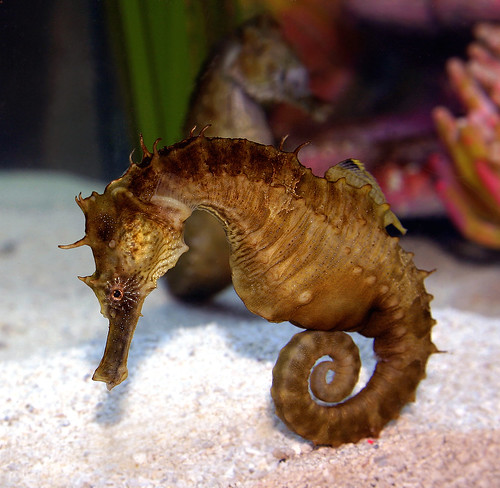
For my birthday my husband took me to the Underwater Adventures aquarium in the Mall of America. We had heard that they opened a new
seahorse and sea dragon exhibit on March 14th.

The species on display at Underwater Adventure's Seahorse Kingdom are Potbelly seahorses,
H. abdominalis;
H. erectus;
H. reidi; and Seaponies,
H. fuscus. I was really impressed with the condition of these seahorses. It's rare to see such fat, healthy seahorses in a public aquarium.
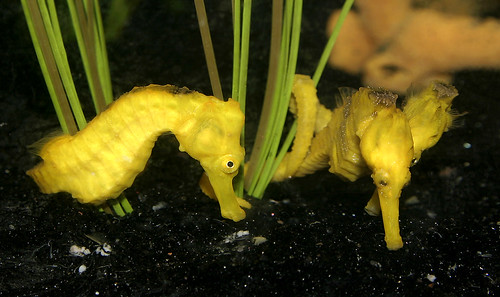
I was very pleased that each species was kept in its own, very large aquarium. The aquariums were the new
bullet-shaped aquariums that I like so much. It was a little tough to get photos through the curved acrylic, but if your subject is in front, it's easy. These seahorses had plenty of room to live and mate; their tanks were nearly floor to ceiling height. Most of the seahorses were very friendly and let me take their photos. The only ones that were shy were the H. fuscus, but that's normal for that species.
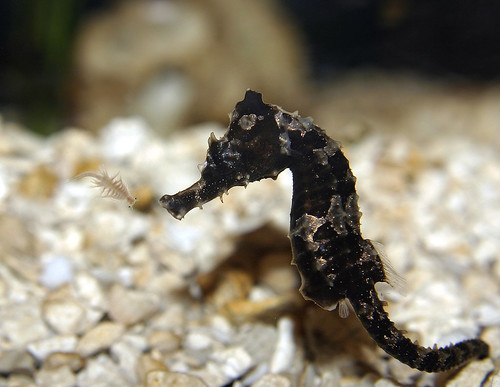
They are trying to breed their seahorses and have a few tanks set up for pregnant fathers and juveniles. I got a couple good shots of a cute little
H. erectus in the fry raising tank.
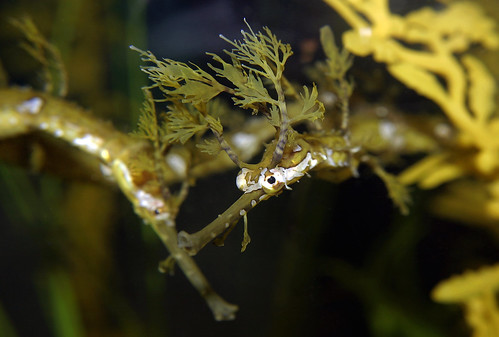
The main attraction were the Ribboned Sea Dragons
Haliichthys taeniophorus. This species has been called pipefish by many scientists who only saw trawled, dead specimens without their cirri. Only recently have taxonomists begun to realize these are more closely related to the other two Sea Dragon species than pipefish. Seeing them alive and up close convinced me that they are in fact Sea Dragons and not pipefish. I got a lot of decent photos of the sea dragons, go to
my Flickr Set to see all of them.
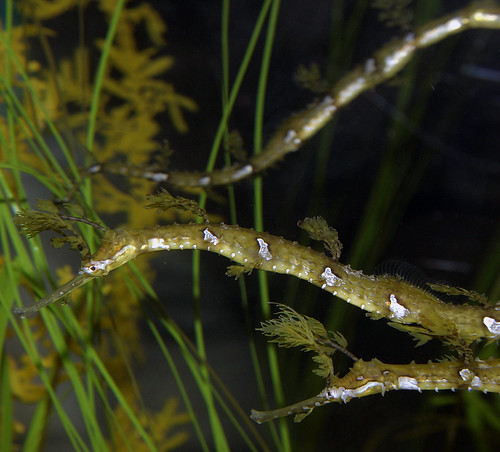
I don't know why more aquariums and hobbyists aren't interested in keeping these Ribboned Seadragons. Rudie Kuiter in his essential book
Seahorses Pipefish and their Relatives says, "No doubt an interesting species that has a lot of aquarium potential and should be bred for this purpose. It is more tropical than its southern relatives and therefore more suitable for many public aquariums." Kudos to Underwater Adventures for keeping this species. I noticed that there were two females and one male at the aquarium, perhaps we might see some juveniles next time we visit.

What's most famous about Underwater Adventures is their tunnel shark tank. You walk through a tunnel under 14 feet of water surrounded by sharks, rays, and huge sturgeons. There were about six divers with huge rulers trying to measure the sharks the day we were there. It was quite funny.

There are a few other miscellaneous creatures at the Underwater Adventures aquarium. They have a little petting area for kids and a giant octopus in a tank at the end. They had a small but healthy reef tank with some corals, shrimp, and reef fish. The jellyfish kriesel was really neat. They even had a huge tank dedicated to bat starfish
Asterina miniata.
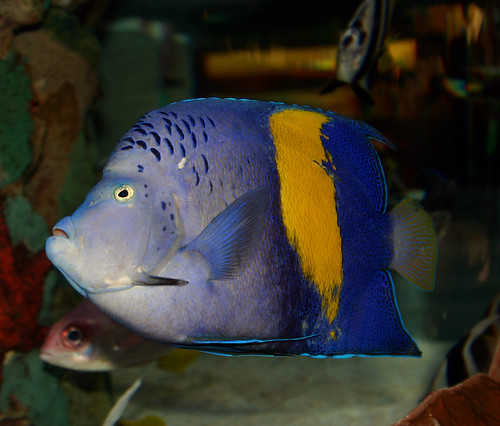
There are large aquariums elsewhere in the Mall of America if you leave Underwater Adventures wanting more. The Rainforest Cafe has several huge aquariums with beautiful tropical reef fish like this Maculosus Angelfish, squirrelfish, Heniochus Butterflies, a six foot Moray Eel, giant Unicorn Tangs, etc. They also shocked me by making me the best burger I've ever eaten.
